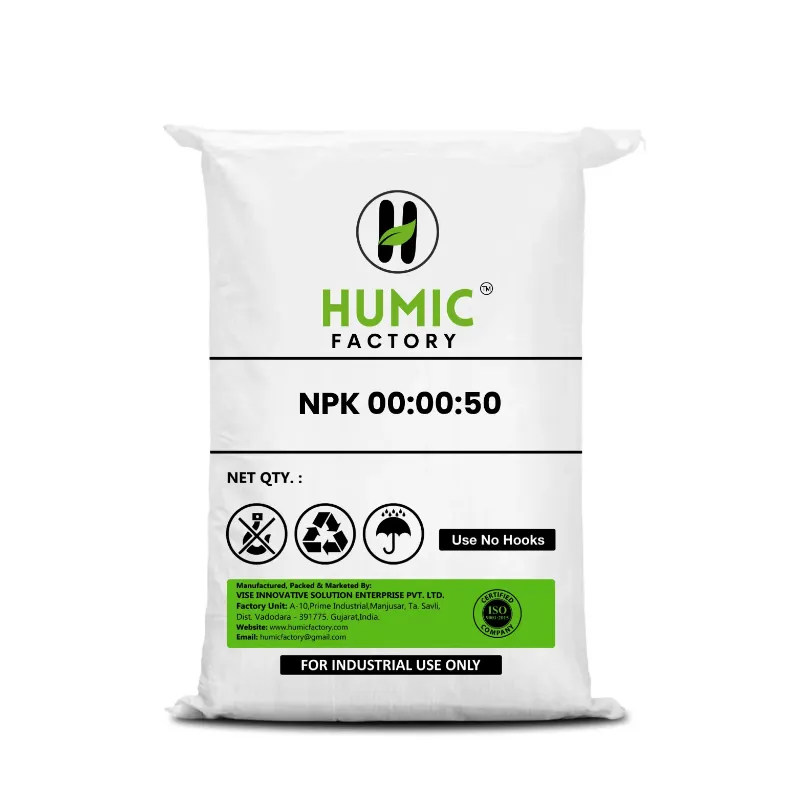NPK fertilizer is a fundamental component of modern agriculture, providing plants with essential nutrients to grow, thrive, and produce healthy yields. The term "NPK" refers to three key nutrients: Nitrogen (N), Phosphorus (P), and Potassium (K). These macronutrients play crucial roles in plant development and are vital for crop health. In this blog, we will explore the importance of NPK fertilizer, its benefits, types, application methods, and how to select the right formula for your plants.
What is NPK Fertilizer?
NPK fertilizer is a blended or compounded fertilizer containing nitrogen, phosphorus, and potassium. Each element in NPK plays a specific role in plant health:
- Nitrogen (N): Nitrogen is responsible for promoting leafy growth and is a key component of chlorophyll, which is essential for photosynthesis. It helps plants convert sunlight into usable energy, resulting in vigorous foliage.
- Phosphorus (P): Phosphorus supports root development, flower and fruit production, and overall plant energy transfer. It also plays a role in seed formation.
- Potassium (K): Potassium helps with water regulation within the plant, strengthens cell walls, and enhances disease resistance. It improves the plant's overall hardiness and ability to withstand environmental stress.
These three nutrients work in harmony to support different stages of plant growth, making NPK fertilizer one of the most popular choices for gardeners and farmers alike.
Importance of NPK in Plant Growth
1. Nitrogen (N) – The Growth Booster
Nitrogen is crucial for the vegetative stage of a plant’s life cycle. It encourages the development of lush, green foliage and stems. Plants deficient in nitrogen may exhibit yellowing leaves, stunted growth, and poor development. It is particularly important for crops like lettuce, spinach, and other leafy vegetables that rely on strong leaf production.
2. Phosphorus (P) – Root and Flower Developer
Phosphorus is essential for strong root development and is particularly important for young plants. It also plays a role in the formation of flowers, seeds, and fruits, making it critical for fruiting crops like tomatoes and peppers. Phosphorus deficiency can lead to poor flowering, weak root systems, and delayed growth.
3. Potassium (K) – The Health Enhancer
Potassium regulates water balance, enhances disease resistance, and improves overall plant vigor. It strengthens plants, making them more resilient to drought, frost, and diseases. Potassium deficiency can lead to wilting, weak stems, and an increased susceptibility to disease.
Benefits of Using NPK Fertilizer
- Balanced Nutrition: NPK fertilizer provides a balanced mix of essential nutrients, ensuring that plants receive all they need for optimal growth.
- Improved Yield: With proper application, NPK fertilizers can significantly increase crop yields by supplying the right nutrients at the right stages of growth.
- Enhanced Soil Health: NPK fertilizers improve soil fertility by replenishing nutrient levels, especially in soils that have been depleted by continuous planting.
- Customizable Formulas: NPK fertilizers come in different ratios, allowing you to choose the best formula for your specific plant needs, whether you need more nitrogen for leafy greens or more phosphorus for root crops.
Types of NPK Fertilizers
NPK fertilizers come in various types, each suited to different plant needs and growing conditions. Here are the most common types:
1. Granular NPK Fertilizer
Granular fertilizers are dry, solid pellets or granules that are spread over the soil. They are slow-release fertilizers, meaning the nutrients are released over time, providing long-term nutrition to the plants. Granular NPK fertilizers are ideal for large-scale farming and long-growing crops.
2. Water-Soluble NPK Fertilizer
Water-soluble fertilizers dissolve in water, making them easy to apply through irrigation systems or as foliar sprays. They provide nutrients quickly, making them suitable for fast-growing plants and situations where plants need immediate nutrition. These fertilizers are popular in hydroponic systems and for greenhouse crops.
3. Liquid NPK Fertilizer
Liquid fertilizers are applied directly to the soil or sprayed onto plant leaves. They are fast-acting and provide immediate nutrient uptake. Liquid NPK fertilizers are often used for precision agriculture, where specific nutrients need to be applied at precise times during the growth cycle.
4. Organic NPK Fertilizer
Organic NPK fertilizers are derived from natural sources such as compost, manure, bone meal, and seaweed extract. They provide a slow, steady release of nutrients and improve soil health over time. Organic NPK fertilizers are ideal for sustainable farming and gardening practices.
NPK Fertilizer Ratios
One of the key features of NPK fertilizers is the ratio of nitrogen, phosphorus, and potassium. The numbers on an NPK fertilizer label (e.g., 10-10-10 or 20-20-20) represent the percentage of each nutrient in the fertilizer by weight. Choosing the right ratio depends on the type of plant you're growing and its specific nutrient needs.
- High Nitrogen Ratio (e.g., 30-10-10): Ideal for leafy vegetables, lawns, and plants in the vegetative stage that require more nitrogen for foliage growth.
- High Phosphorus Ratio (e.g., 10-20-10): Best for flowering plants, fruiting vegetables, and root crops that need more phosphorus for strong root systems and better fruit production.
- High Potassium Ratio (e.g., 10-10-30): Suitable for crops that require improved disease resistance, stronger stems, and drought tolerance.
How to Apply NPK Fertilizer
Applying NPK fertilizer correctly is essential to avoid over-fertilizing or under-fertilizing your plants. Here are a few common methods:
1. Broadcasting
Broadcasting involves spreading granular NPK fertilizer evenly over the soil before planting or during the growing season. This method ensures that all plants receive the nutrients, especially in large farming operations.
2. Top-Dressing
Top-dressing involves applying fertilizer around the base of plants after they have started growing. It is a common method for crops that need additional nutrition during the growing season, such as corn or tomatoes.
3. Foliar Feeding
Foliar feeding is a method of applying liquid or water-soluble NPK fertilizers directly to plant leaves. This method is useful for providing immediate nutrition, particularly when plants are showing signs of nutrient deficiency.
4. Drip Irrigation
In drip irrigation systems, water-soluble NPK fertilizers can be added to the water supply and delivered directly to plant roots. This method ensures efficient nutrient delivery and minimizes waste.
Common Mistakes When Using NPK Fertilizer
While NPK fertilizers are beneficial, improper use can lead to negative effects on plants and the environment. Here are some common mistakes to avoid:
- Over-Fertilizing: Applying too much NPK fertilizer can cause nutrient burn, where plants become damaged from excessive nutrients. This can lead to poor growth and even plant death.
- Ignoring Soil Tests: Without testing your soil, it's hard to know which nutrients are already present and which ones are lacking. Over-fertilizing certain nutrients can harm soil health in the long run.
- Wrong NPK Ratio: Using the wrong ratio for your specific crop can lead to imbalanced growth, where plants may develop lush foliage but fail to produce flowers or fruits.
How to Choose the Right NPK Fertilizer
Selecting the best NPK fertilizer for your plants depends on several factors:
- Plant Type: Leafy greens, root crops, and flowering plants have different nutrient requirements, so choose a fertilizer based on your crop's needs.
- Growth Stage: Plants have varying nutrient needs at different stages. Use higher nitrogen formulas for early growth and higher phosphorus formulas for flowering and fruiting stages.
- Soil Condition: Test your soil to determine nutrient deficiencies. If your soil is low in a particular nutrient, choose a fertilizer that compensates for that shortage.
Conclusion
NPK fertilizers are essential for ensuring healthy plant growth, increasing crop yields, and maintaining soil fertility. By understanding the role of nitrogen, phosphorus, and potassium, you can make informed decisions on which NPK fertilizer to use and how to apply it effectively. Whether you’re a home gardener or a large-scale farmer, choosing the right NPK formula and applying it correctly will help you achieve optimal results in your plants and crops.
For the best results, always consider your plant's specific needs, perform regular soil tests, and follow recommended application methods. With the right approach, NPK fertilizer can be a powerful tool for promoting sustainable, healthy, and productive agriculture.





